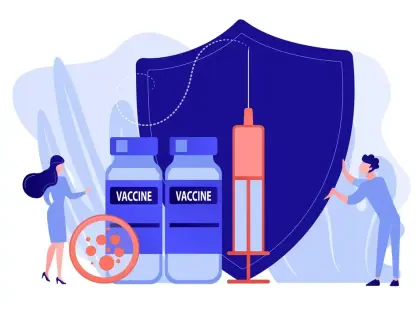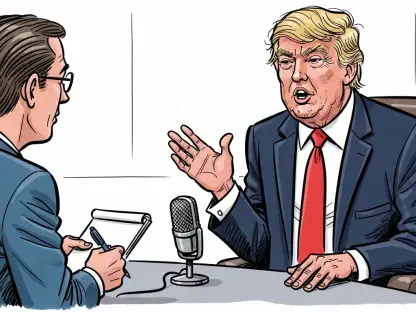In the realm of healthcare policy and legislation, few can rival the insights and expertise of Donald Gainsborough, a seasoned leader known for navigating complex policy landscapes. As the figurehead of Government Curated, Gainsborough offers a unique perspective into the intricacies of healthcare reform, particularly regarding price transparency – a topic that has become a focal point under recent administration efforts. Price transparency is seen as an essential tool for addressing healthcare system inefficiencies. While federal mandates set the groundwork, states are taking initiative, creating varied approaches to increase compliance and expand oversight, given the dipping rates of adherence among hospitals.
Can you explain the significance of price transparency in healthcare and why it is a priority for the Trump Administration?
Price transparency is crucial in healthcare because it empowers consumers to make informed decisions by understanding the true cost of medical services. The Trump Administration has prioritized this issue consistently because it believes that greater transparency will lead to lower costs and improve the quality of care. By demanding clarity in pricing, the administration aims to dismantle the confusion and unpredictability surrounding healthcare expenses, which can greatly impact patients’ ability to plan and manage their healthcare needs.
What are the key elements of President Trump’s recent executive order on price transparency?
President Trump’s recent executive order on price transparency seeks to standardize pricing data and ensure comparability across health systems and insurers. It mandates hospitals to display actual prices for services rather than estimates, aiming for a clearer understanding of costs for patients and providers alike. This move is designed to facilitate competition among healthcare providers by enabling patients to compare costs, ultimately driving down prices and improving quality.
How does the recent executive order differ from the one issued during Trump’s first term?
The latest executive order acts as a refinement and enhancement of previous efforts, offering updated guidance and rules. This includes comprehensive requirements for price data standardization, compared to the more preliminary standards set during Trump’s first term. It emphasizes stronger enforcement mechanisms to ensure compliance and increased transparency, reflecting lessons learned from initial implementations and the evolving healthcare landscape.
What role has Dr. Mehmet Oz played as CMS Administrator regarding price transparency efforts?
Dr. Mehmet Oz, as CMS Administrator, has been at the forefront of implementing the executive order on transparency. His vision involves strategic oversight and initiatives to ensure rigorous compliance with federal guidelines. He has focused on engaging with healthcare providers to promote transparency practices that align with both federal objectives and consumer needs, spurring innovative methods to display and communicate pricing.
How are states like Colorado taking their own initiatives towards price transparency in healthcare?
Colorado has taken significant steps by crafting regulations that enforce price transparency directly through carriers and pharmacy benefit managers (PBMs). This initiative is more comprehensive than similar actions taken by other states, aiming to hold various health system entities accountable for price reporting. Colorado’s regulation highlights a proactive approach to extend transparency beyond hospitals to additional facets of the healthcare delivery system.
Can you describe the specific regulation that Colorado has finalized regarding carriers and pharmacy benefit managers?
The finalized regulation in Colorado requires carriers and PBMs to submit detailed price transparency files and prescription drug data to the Colorado Insurance Commissioner on a set schedule. This regulation, based on a 2024 Colorado law, extends the oversight to these entities to ensure they adhere to both state laws and federal transparency requirements, thereby fostering a more complete and enforceable transparency landscape.
How does the Colorado regulation expand oversight compared to existing federal requirements?
Colorado’s approach broadens the scope of oversight by incorporating carriers and PBMs into the transparency requirements, whereas federal mandates primarily focus on hospitals. This expansion allows the state to address pricing issues at multiple points within the healthcare system, pushing for thorough compliance and giving consumers comprehensive access to pricing information.
What have other states, such as New Jersey, Michigan, and Oklahoma, proposed to enhance price transparency compliance?
These states have introduced legislative proposals that impose strict penalties on hospitals that fail to meet transparency standards. For instance, New Jersey, Michigan, and Oklahoma have suggested barring non-compliant hospitals from collecting medical debts from patients, establishing a direct financial consequence for lack of adherence and incentivizing hospitals to improve compliance.
How does Washington State’s approach using fines to support a price transparency tool work?
Washington State has crafted a novel approach by channeling proceeds from fines levied on non-compliant hospitals into developing a statewide price transparency tool. This resource is intended to assist consumers in comparing hospital prices, using funds generated from penalties to further transparency initiatives, creating a cycle of compliance-driven funding that benefits the public.
What prompted Indiana to issue an executive order on examining transparency requirements?
Indiana’s executive order reflects a commitment to thoroughly assessing and enhancing enforcement of transparency standards. This move was prompted by recognizing the need for statewide consistency and stronger regulations to bring more hospitals and healthcare providers in line with federal expectations, aiming to improve the overall accessibility and reliability of healthcare pricing data.
Why are states getting involved in enforcing federal price transparency requirements?
With compliance rates surprisingly low, states are stepping in to ensure adherence to federal guidelines, driven by a shared interest in protecting consumer rights and fostering equitable healthcare practices. They recognize the significant impact on their constituents and aim to bridge gaps in federal oversight through local legislation that can enforce and expand upon national directives.
What is the current compliance rate among hospitals regarding federal transparency requirements?
Unfortunately, the current compliance rate among hospitals with federal transparency requirements is just 21%, showing a decline from previous years. This exemplifies the challenges that both federal and state governments face in achieving widespread adherence, signaling the need for stronger enforcement and monitoring measures.
How has CMS been addressing compliance issues among hospitals in 2025?
CMS has escalated its enforcement efforts significantly in 2025, increasing the number of actions taken against non-compliant hospitals. Despite this increase, penalties have decreased in size, shifting the focus toward widespread compliance improvements rather than punitive measures alone, while seeking to encourage better practices through strategic guidance.
Why do you think compliance rates are dropping despite increased enforcement by CMS?
Compliance rates appear to be dropping due to persistent systemic challenges within the healthcare sector that have not been fully addressed by previous enforcement efforts. Many hospitals struggle to meet complex and detailed transparency requirements, suggesting that further incentives or support might be necessary to achieve higher compliance levels.
Over the years, how have transparency requirements evolved to include hospitals and healthcare plans?
Transparency regulations have evolved from focusing solely on hospitals to embracing broader healthcare plans and service providers. This reflects a growing understanding of the interconnected nature of healthcare pricing and the need for all segments of the industry to provide clear and usable pricing information to maintain transparency across the board.
How important is bipartisan support for the success of price transparency initiatives?
Bipartisan support is crucial because it ensures long-term stability and implementation of transparency initiatives, transcending political divides. Unified backing from both major parties can facilitate continuous improvements in policy, encouraging comprehensive legislative solutions and fostering collaborative efforts across state and federal levels.
Can you discuss any challenges or opposition that these transparency initiatives may face?
Transparency initiatives frequently encounter resistance from hospitals and insurance companies due to concerns about competitive vulnerabilities and administrative burdens. Implementing new rules requires substantial adjustments, and there is often pushback regarding the resources needed to comply. Addressing these challenges requires a delicate balance of enforcement, incentives, and collaboration.
What do you think are the future implications of successfully implementing price transparency in healthcare?
Successfully implementing price transparency has the potential to revolutionize healthcare by empowering consumers, driving down costs, and enhancing care quality through informed decision-making. It could lead to a more competitive market, with providers striving for cost-efficiency and service excellence, ultimately transforming the healthcare landscape for the better.









